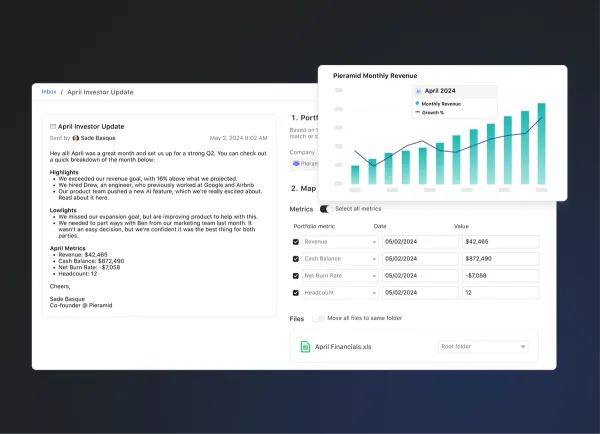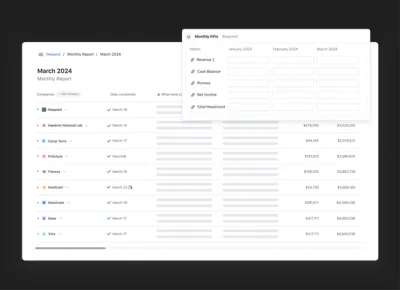
Raising venture capital for your startup is difficult. Raising venture capital for your startup with little to no revenue can feel impossible. However, venture capital funds have started to invest earlier and earlier into startups. The emergence of pre-seed rounds has led to more interest in pre-revenue startups.
Related Resources: All Encompassing Startup Fundraising Guide & Seed Funding for Startups 101: A Complete Guide
Luckily, there are countless startups that have done it before. In order to better help founders navigate a fundraise with little to no revenue, we break down lessons from startups and investors that have taken part in a pre-revenue funding round below:
What is Pre-Revenue Funding?
Pre-revenue funding is equity or debt financing for companies that have yet to generate revenue. Pre-revenue funding can apply to companies across different sectors, markets, verticals, etc. Startups might have a product or a product in development but have yet to take it to market. Pre-revenue funding generally helps a company at this stage build its product or put a go-to-market motion to practice.
Related Resource: The Understandable Guide to Startup Funding Stages
What Does It Mean To Be Pre-Revenue?
Pre-revenue startups can be at varying stages in their startup lifecycle. For example, if a company is working on an incredibly large scale project revenue might come much later in its lifecycle. On the other hand, there might be companies that have developed a product and are ready to take it to market but need capital to hire talent and put their product and distribution to work. For the sake of this post, we will generally be speaking of companies
How Do Startup Founders Get Pre-Revenue Funding?
The most common form of funding to receive before revenue is venture capital. Startups and venture capital funds generally follow a power law curve. This means that investors need to find a few companies that can generate massive returns for their LPs. Because of this, they are willing to invest in more companies at early stages in return for a larger equity percentage with the hope that a few of the companies will pan out to generate huge returns.
Related Resource: Understanding Power Law Curves to Better Your Chances of Raising Venture Capital
In order to improve your odds of raising capital at the pre-revenue stage, you need to understand the VC thought process and demonstrate why you can grow into a company that will generate returns for its investors/LPs.
How Investors Evaluate Pre-Revenue Startups
Every startup investor will use a different method or style to evaluate potential investments, especially pre-revenue startups. Understanding how venture capitalists think about making investments will greatly increase your odds of raising a round. Check out a few of the common methods and valuation styles below:
Related Resource: A Quick Overview on VC Fund Structure
1) The Berkus Method
As we wrote in our post, Valuing Startups: 10 Popular Methods, “The Berkus Method is an attempted way to assess value without the traditional revenue metrics that many methods take into account for more mature organizations.
The Berkus Method quantifies value by assessing qualitative qualities instead of quantitative ones. Value is assessed in the Berkus Method with five main elements. The elements considered within the Berkus Method include value business model (base value), available prototype to assess the technology risk and viability, founding team members and their abilities or industry knowledge, strategic relationships within the space or team, existing customers or first sales that prove viability. A quantitative value can be tied to each relevant quantitative factor with the Berkus Method.”
2) Risk Factor Summation Method
As we wrote in our post, Valuing Startups: 10 Popular Methods, “The Risk Factor Summation Method is used with risk as the primary method for evaluation. This approach values a startup by taking into quantitative consideration all risks associated with the business that can affect the return on investment.
An initial value is calculated (possibly even using one of the other methods discussed in this post) and then the risks are assessed, deducting or adding to the initial value calculation based on said risks to the return. Some of the different kinds of risks that are taken into account are managing risk, political risk, manufacturing risk, market competition risk, investment and capital accumulation risk, technological risk, and legal environment risk.”
3) Venture Capital Method
As we wrote in our post, Valuing Startups: 10 Popular Methods, “This method is one of the most common, if not the most common method used for evaluating startups that are pre-cash flow and seeking VC investment. The VC Method looks at 6 steps to determine valuation:
- Estimate the Investment Needed
- Forecast Startup Financials
- Determine the Timing of Exit (IPO, M&A, etc.)
- Calculate Multiple at Exit (based on comps)
- Discount to PV at the Desired Rate of Return
- Determine Valuation and Desired Ownership Stake
It’s ultimately a quick, rough estimate informed by as much information as is available based on the market, comps, any existing quantitative and qualitative info from the company at hand, and an assumed amount of risk from the VC Firm.”
5) Scorecard Method
As we wrote in our post, Valuing Startups: 10 Popular Methods, “This valuation method looks at these similar companies and sees what types of valuation they received from other investors. From there, the median will be calculated from the value of all the similar companies’ valuations and this median will determine the average value of the target company. In addition to the median value placed on the competitive landscape, scorecards are looking at the strengths and weaknesses of the market as assessed by other investors and score their investment in question weighted with the following criteria compared to the other companies in the space:
- Board, entrepreneur, the management team – 25%
- Size of opportunity – 20%
- Technology/Product – 18%
- Marketing/Sales – 15%
- Need for additional financing – 10%
- Others – 10%
A company may be valued higher than the median with the scorecard method if the size of opportunity or board/management team is exceptional quality or vice versa, may be docked if the tech is strong but the leadership is assessed as in-experienced.”
Looking for Fundraising? Visible Can Help!
Running a process to raise capital, especially before generating revenue, is a surefire way to improve your odds of success. Find ideal investors with Visible Connect, add them to your Fundraising Pipeline, and share your pitch deck all from Visible. Give Visible a free try for 14 days here.




